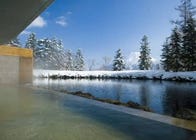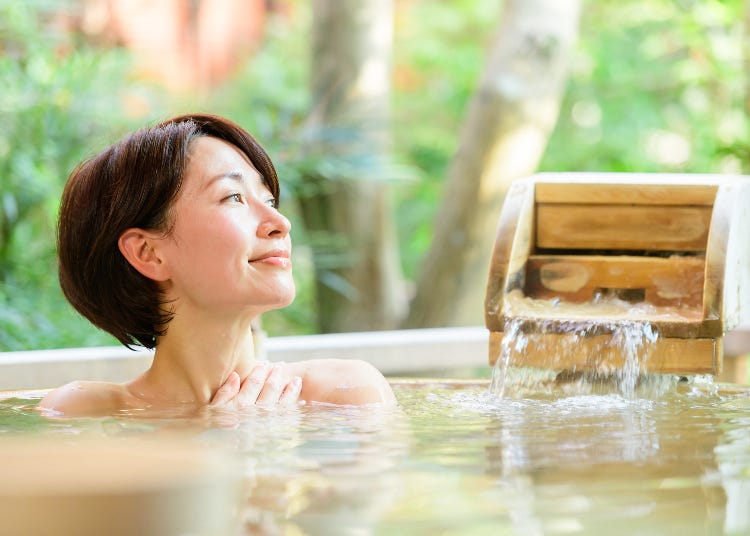
Do's & Don'ts: 9 Weird Things Tourists Often Forget at Onsen in Hokkaido
- Written by: Minna no Kotoba Sha
Japan is well-known as an onsen (hot spring) country. There are many onsen in Hokkaido, and you can find them speckled all around Japan's northern island! These include famous ones to hidden ones that are known just by a few people. Among them, there are also many unique onsen in Hokkaido that are just as nature made them, complete with amazing views.
They add that little bit more adventure to a trip to this country, and can often be the highlight! However, as these onsens are natural ones, and can be actually in the middle of the wilderness if you don't know how to use them correctly, then it can cause issues!
In addition to basic manners that must be observed when going into any onsen in Japan, there are other things to keep in mind when using an onsen in Hokkaido, so let's go over these to make sure you are ninja ready for your trip!
Main image: PIXTA
Basic Manners when Using an Onsen in Hokkaido
First of all, let’s remind ourselves of some of the basic manners for using an onsen in Japan - these are pointers which are good to remember. Not only will they help you enjoy using onsens, they will also make sure that you fit in with what other people are doing.
1. Don't wear a swimsuit
In Japan, people enter the onsen area naked from the changing rooms and don’t wear a swimsuit when bathing. As such, almost every onsen in Hokkaido will have warning signs pointing out that swimsuits are prohibited.
For this reason, the vast majority of them have separate areas for men and women. There are a few mixed onsens, but they have warning signs that they are mixed. However, you don’t need to worry too much about blundering into a mixed onsen, as there really very few!
2. Don’t go into the water wearing a towel
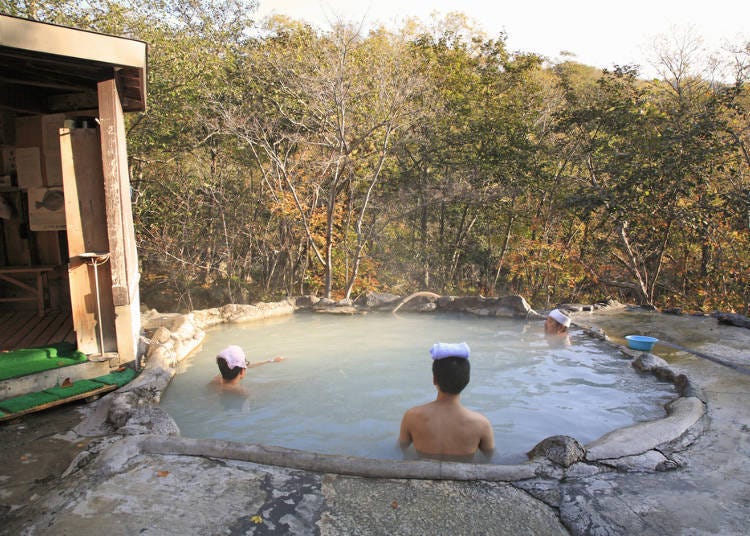
While you can’t wear a swimsuit in an onsen from the changing room, you can take a towel with you. But don’t go into the water while wearing a towel around your waist! It is also common to take only a small hand towel with you, not a bath towel. It is prohibited to bathe with a towel on because it will make the water dirty.
Occasionally, you might see people wearing towels in an onsen on Japanese TV shows or in publicity photos, but this is just for the sake of modesty. You might wonder where you should put your hand towel when you enter the water; however, there is an easy answer. Go completely Japanese style and put it on your head!
Japanese people believe that having a towel on your head while bathing prevents your head, the only part of you not in the water, from getting cold. It also helps prevent blood from rushing to your head when you get out of the water. You will fit right in with everyone else by putting your towel on your head. For the same reason as the towel, people try not to let their hair get into the water. People with long hair tend to wear their hair up so that everyone can enjoy pristine clean water.
3. Wash before bathing
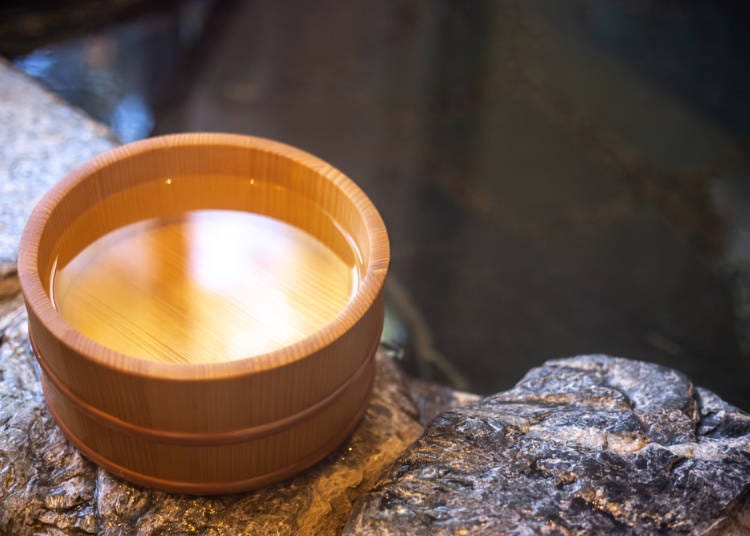
Before entering the water, you need to wash. There are two reasons for washing. The first is to stop the water from getting dirty; if everyone went into the water unwashed, then it wouldn’t stay clean!
The other reason is to warm up before getting into the hot water. If you went straight into the hot water, then your body might get a bit of a shock. You can enjoy the hot waters of the onsen better if you wash first, warm up your body and then gently immerse. It depends on the onsen, but usually, there will be a dedicated washing area. The critical point is to wash with hot water before getting into the hot waters of the onsen.
4. Don't jump!
Onsen in Hokkaido are not swimming pools. They are shallow, and the water is hot, so it is hazardous to jump in. Open-air Hokkaido onsens are often made using rocks, so if you aren’t careful, it is easy to injury yourself. Please be careful and don’t take unnecessary risks, never jump into the water, and be extra cautious at open-air onsens.
5. Most onsens prohibit people with tattoos from entering
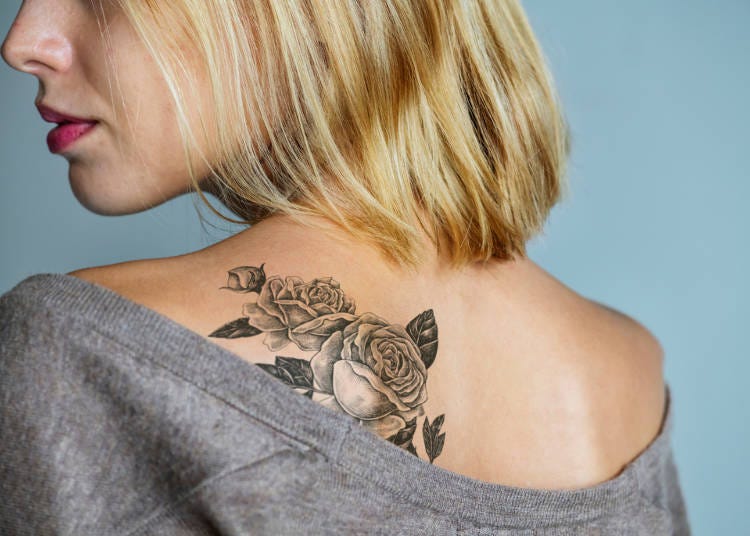
Culturally speaking, many Japanese people have a negative view of tattoos, and this means that the vast majority of onsens prohibit people with tattoos from entering. However, onsen owners are aware that tattoos aren’t such a taboo abroad and are increasingly accepting of letting people with tattoos in, on certain conditions.
Usually, if you have a small tattoo, then you will be asked to cover it up with a bandage. If you have big tattoos, then it is better to use a private onsen room, which can be found at larger onsen facilities and many ryokans (traditional Japanese inns).
6. Don't use other people’s shampoos or shower gels
Most Hokkaido onsens supply shampoo and body soap, which can be used quite freely. It's very convenient as you can go to pretty much any onsen empty-handed. However, many Japanese people bring their own shampoos or shower gels, etc.
As they might leave them in a basket or lying around, or even forget where they left them, you might think it has been left there for your use. So try not to make this mistake. If the product looks like one provided everywhere else in the onsen or changing rooms, then it will be safe to use, but if it isn't clear, then don't touch it.
Special points about onsen in Hokkaido
Hokkaido, as stated previously, has many natural onsens. Basically, there won’t be any problems if you keep the above points in mind, but Hokkaido with its natural onsens presents a slightly different set of circumstances.
1. Be respectful to local residents
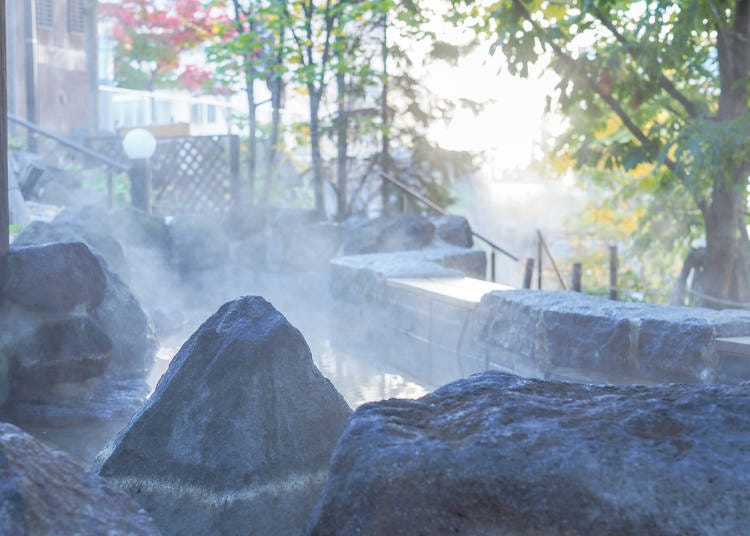
In Hokkaido, there are places where there are unmanned, but built, Hokkaido onsen facilities, and there are other places which are open-air onsens, both of which are used mainly by local people.
This isn’t to say there is a problem if you want to use them, but you need to remember that they have been around a long time and are much loved by locals. So be sure to adhere to the above pointers and try to leave everything the same way you found it.
If you receive advice from local people, then try to pay attention. There may also be a bath charge, which users are meant to pay even if no one is around.
2. Stay safe when using natural Hokkaido onsens
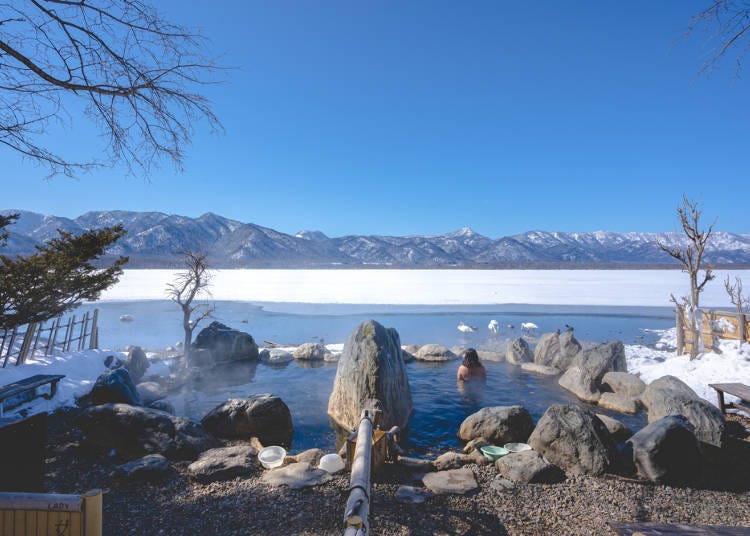
There are rare onsen in Hokkaido in the middle of nature that haven't been touched by human hands. While they make a valuable bathing experience and certainly help create memories of your trip, which you will never forget, these places also increase the probability of encounters with wildlife, such as brown bears.
There are onsens in Hokkaido deep in the mountains or the wilderness that can't be reached without taking mountain paths, and for which you need to prepare proper hiking gear. Hot springs that are on the coast or the shore of a lake can also be affected by natural phenomena, including both the weather and tides.
When planning to go to such Hokkaido onsens, please check with local people before departing, and make sure you are sufficiently prepared and equipped to use them safely. Many natural open-air onsens don't have washing areas. At these onsens, you can still get in and enjoy a hot bath, but you can't use shampoo or body wash.
3. Watch out for heat shock and frozen floors
In a warm changing room, or hot water, blood vessels widen, and blood pressure decreases, but upon leaving the water, you are exposed to cold air, and the blood vessels shrink and blood pressure increases.
This sudden fluctuation in blood pressure is a burden on the heart, and indeed has various kinds of effects on the body. This is applicable not only to winter in Hokkaido, but there are also places that are cold in the early morning or at night, even in summer, so it is best to be aware of the weather forecast when using an open-air onsen in Hokkaido.
At open-air onsens in the winter, both the floor and the edges of the onsen can be completely frozen. It can be difficult to see very well if there is steam coming off the water, and rocky or dangerous surfaces can be hidden under snow. So there are dangers to be aware of to avoid a bad fall. Carefully check the local area and be careful!
Text by: Minna no Kotobasha
Related Articles
Minna no Kotoba Sha is a production company founded by an editor with extensive experience in editing local magazines in Sapporo. For over 20 years, our team has conducted research and written articles across Hokkaido, with Sapporo as our primary hub. Our diverse portfolio includes the production of various books such as travel guides, informational magazines, and collections showcasing the picturesque landscapes of Hokkaido. Comprised entirely of women, the team at Minna no Kotoba Sha boasts diverse interests, including a passion for travel, culinary delights, and alcoholic beverages. The scope of our communication efforts spans a wide range, covering everything from introducing notable restaurants to providing coverage of local events and sharing stories of leisure experiences.
*Prices and options mentioned are subject to change.
*Unless stated otherwise, all prices include tax.
Popular Tours & Activitiess
Recommended places for you
-
Appealing

Mt. Hakodate Observatory
Forests & Mountains
Hakodate
-

LakeAkan
Rivers, Lakes & Canyons
Abashiri
-
Appealing

Otaru Canal
Rivers, Lakes & Canyons
Otaru
-

Niseko Village Ski Resort
Skiing & Snowboarding
Niseko / Rusutsu
-
Appealing

Rukku and Uohei
Izakaya
Sapporo / Chitose
-
Appealing

Noboribetsu Onsen
Hot Springs (Onsen) & Bath Houses (Sento)
Noboribetsu / Lake Toya
-
Ad

Smart Ways to Avoid Crowds and Enjoy a Safe, Comfortable Trip to Otaru.
-

7 Iconic Hokkaido locations that will make your Instagram shine
by: Himanshi Shah
-
Ad

Cycling Through Hokkaido: Discover the Beauty of Memuro and the Tokachi Plains
-

Scenic Road Trip from Hakodate to Matsumae: Stunning Views, Traditions, and Tasty Delights
by: Nobuka Kawashima
-
Ad

Sapporo SATUDORA Shopping Guide: Get Souvenirs, Medicine & More at This Iconic Drugstore (Special Deal Inside!)
-

Beyond Hakodate and Matsumae: Enjoy the Hidden Gems of Hokkaido’s Donan Area
-

Hokkaido’s Hot Spring Paradise: A Definitive List of the Best Hokkaido Onsen!
by: Steve Csorgo
-

Best Onsen in Japan: Popular Hot Springs Destinations Japanese People Can't Get Enough Of
by: Ran Tanaka
-

Tokyo Train Map: Your Essential Guide to Subways and Railways
-

Where to Stay in Noboribetsu Onen: 6 Ryokan Hotels in Hokkaido's Spa Wonderland
by: Masakazu Yoshida
-

6 Surprisingly Cheap Things in Japan
-

3 Gorgeous Onsen in Niseko: Soaking Spots in Japan's Wild North
- #best sushi hokkaido
- #things to do hokkaido
- #best ramen sapporo
- #what to bring to japan
- #new years in tokyo
- #what to buy in ameyoko
- #japanese nail trends
- #what to do in odaiba
- #onsen tattoo friendly tokyo
- #daiso
- #best sweets otaru
- #japanese fashion culture
- #best nature furano
- #japanese convenience store snacks
- #best japanese soft drinks
















